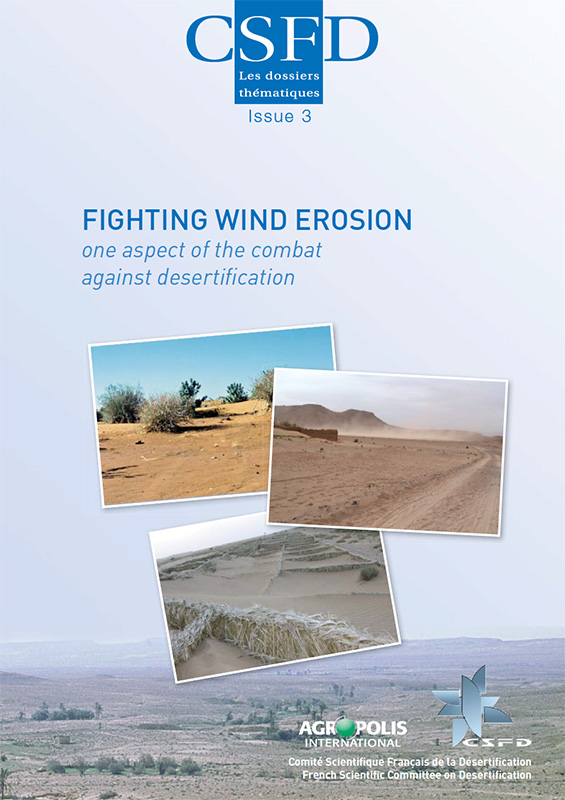One aspect of the combat against desertification
Wind erosion—alone or combined with other physical or socioeconomic causes—is a mechanism that may induce desertification, i.e. severe or irreversible degradation of water and soil resources. Now that this phenomenon is better understood, the model of the 1970s based on three distinct stages (causes, mechanisms, consequences) has been discarded, in view of the many feedbacks and insidious links generated by wind erosion. Timely detection of wind erosion onset thresholds with remote sensing tools (satellite images and aerial photographs), and spatial delimitation and positioning of the phenomena observed are essential to be able to efficiently combat the damaging effects of wind erosion. No field operations can be effective without prior knowledge of wind erosion mechanisms at the land-atmosphere interface.
At this interface, wind activities are organised in dynamic units on a continental scale, or so-called global wind action systems (GWAS) spanning the Saharan and Sahelian regions, or regional scale (sweeping southwards across Egypt), or so-called regional wind action system (RWAS), in which humans interact via their activities. A GWAS is divided into three (particle source, wind transport, deposition) areas, each of which may be found at several locations within the GWAS.
When striving to combat wind-induced threats, especially by controlling clay, silt and sand particle loss and, conversely, sand invasion, the sediment balance and types of prevailing dunes should be taken into account, while distinguishing between the:
- mobility in source areas where mobile particles should be stabilised
- mobility in transport areas where wind streams should be deflected so as to prevent human infrastructures from being filled with sand, and
- mobility in deposition areas where sand invasion is at stake.
The first stage consists of defining the site to be protected in relation to the GWAS or RWAS (taking the topography and type of dune or mobile sand into due consideration), and assessing the surface to be stabilised or protected. The second operational stage aims at reducing the surface wind velocity through technical and biological strategies.
To ensure success, the specific features of local ecosystems and human communities must be taken into consideration and effectively tapped in wind erosion control programmes in order to minimise costs and come up with solutions that are viable for the communities involved.


